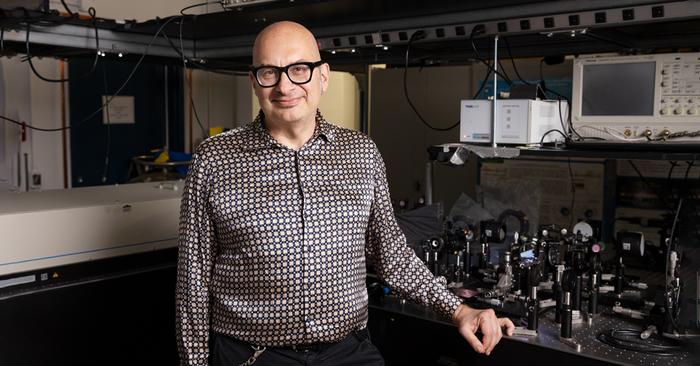Scientists at the Institut national de la recherche scientifique (INRS) have developed a novel synthetic photonic lattice capable of generating and manipulating quantum states of light, potentially revolutionizing quantum computing and secure communication.
Summary: Researchers demonstrate a new method for quantum information processing using synthetic photonic lattices and quantum walks, offering improved efficiency and control in quantum systems.
Estimated reading time: 5 minutes
In a significant stride towards practical quantum technologies, a team led by Professor Roberto Morandotti at INRS has unveiled a groundbreaking approach to quantum information processing. Their research, published in Nature Photonics, showcases a temporal synthetic photonic lattice that harnesses quantum walks to manipulate high-dimensional photons entangled in their temporal states.
Quantum Walks: A Path to Enhanced Computing
At the heart of this discovery lies the concept of quantum walks, a quantum mechanical analog of classical random walks. Professor Morandotti explains, “The development of the field of quantum computing, which began some twenty years ago, has benefited greatly from the notion of quantum walks, which are known to increase the speed and complexity of computer algorithms.”
The research team’s innovation builds upon this foundation, combining quantum walks with synthetic photonic networks. This fusion has yielded unprecedented control over the evolution of photon propagation, improving both the detection and number of photon coincidences, as well as overall system efficiency.
Stefania Sciara, a post-doctoral researcher on Morandotti’s team and co-author of the study, highlights the novelty of their approach: “Our team has discovered how to use synthetic photonic lattices to process quantum information, based on the quantum walks of high-dimensional photons entangled in their temporal states.”
Simplicity Meets Power: A Telecom-Compatible Quantum System
One of the most striking aspects of this breakthrough is its simplicity and compatibility with existing infrastructure. “The system doesn’t require a lot of resources, as it consists of fiber devices, which are compatible with standard telecom infrastructures,” Morandotti notes.
This compatibility could accelerate the integration of quantum technologies into current systems, potentially leading to faster development and deployment of quantum-enhanced applications.
Wide-Ranging Implications for Quantum Technologies
The discovery opens doors to numerous applications in quantum computing, metrology, and secure communications. The researchers’ approach allows for better control of quantum walks in the time domain and enables simultaneous manipulation of classical light and entangled photons.
Sciara emphasizes the practical implications: “This discovery is proof that it is possible to realize high-performance quantum systems using devices, techniques, and infrastructures that are within reach. It also demonstrates that it is possible to use quantum networks to transmit personal data securely.”
Looking Ahead: The Future of Quantum Information Processing
As the field of quantum technologies continues to evolve, this research represents a significant step towards realizing practical, scalable quantum systems. The ability to process quantum information using synthetic photonic lattices could lead to more efficient quantum algorithms and more robust quantum communication protocols.
While challenges remain in scaling these systems and integrating them with existing technologies, the work of Morandotti and his team provides a promising pathway for future developments in quantum information science.
Quiz: Test Your Understanding
- What is the main innovation presented in this research?
- How does the new system compare to existing telecom infrastructure in terms of compatibility?
- What are three potential applications of this technology mentioned in the article?
Answers:
- A temporal synthetic photonic lattice capable of generating and manipulating quantum states of light using quantum walks.
- The system is highly compatible, consisting of fiber devices that work with standard telecom infrastructures.
- Quantum computing, quantum metrology, and secure quantum communications.
Glossary of Terms
- Quantum walks: Quantum mechanical analogs of classical random walks used in quantum algorithms.
- Synthetic photonic lattice: An artificial structure that manipulates light for quantum information processing.
- Entanglement: A quantum phenomenon where particles are connected regardless of distance.
- Time-bin encoding: A method of encoding quantum information using the temporal properties of photons.
- Photon coincidence: The simultaneous detection of two or more photons, crucial for many quantum experiments.
- Quantum metrology: The science of extremely precise measurements using quantum systems.
Enjoy this story? Get our newsletter! https://scienceblog.substack.com/


